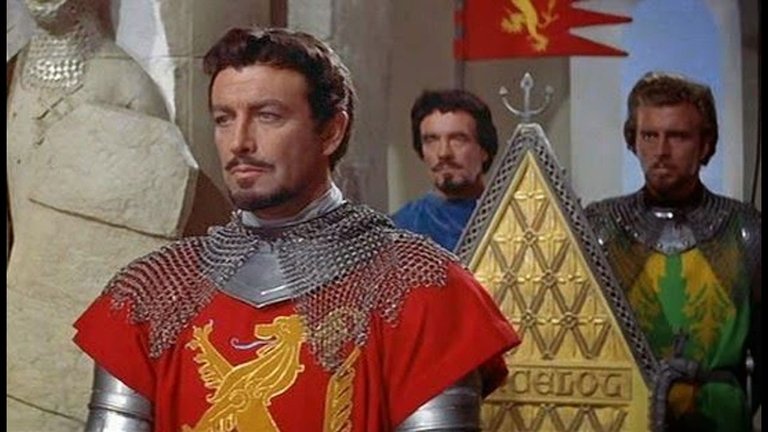Film Review: Knights of the Round Table (1953)

The 1953 film Knights of the Round Table is a significant piece of Hollywood cinema from the early 1950s, a time when the film industry faced the challenge of television's rising popularity. To combat this, Hollywood aimed to provide audiences with grand spectacles that little black-and-white images at television screens could not replicate, leading to the adoption of technologies like Cinemascope, which allowed for a wider 2.35:1 picture format. Knights of the Round Table, a pseudo-historical epic directed by Richard Thorpe, was one of the pioneering films to utilize this technology, enhancing the visual experience for viewers.
Based on Arthurian legends, particularly those found in Sir Thomas Malory's poem Morte de l'Arthur, the film's plot revolves around the iconic characters of King Arthur, Sir Lancelot, Queen Guinevere, and Merlin. The setting of the film is anachronistic, blending the pomp, ceremony, iconography, and chivalrous ideals of the High Middle Ages into a portrayal of 6th Century Britain, thrown into the anarchy after the retreat and collapse of Roman Empire. The plot begins with Arthur Pendragon (played by Mel Ferrer), aided by wise Merlin (played by Felix Aylmer), ascending to become the King of England and ushering in a golden age of peace, prosperity, and justice. Supported by noble knights like Lancelot (played by Robert Taylor), who becomes his champion, Arthur's court at Camelot brings an age of peace, justice and prosperity until the ambitious and malevolent Prince Mordred (played by Stanley Baker) uses Lancelot’s love for Arthur’s wife Guinevere (played by Ava Gardner) to manipulate the court, leading to a tragic unravelling of the kingdom's harmony and the downfall of the once-great Arthurian realm.
Knights of the Round Table was produced following the success of the 1952 film Ivanhoe, employing a similar formula with British locations, talented British cast and crew, and starring Robert Taylor under the direction of Richard Thorpe. However, despite these elements, the film falls short in several aspects. The uninspired script makes Knights of the Round Table appear inferior to Ivanhoe. While Thorpe excels in directing action scenes, such as the semi-comical duel between Arthur and Lancelot, the grand battle with Mordred's army, and the final duel between Lancelot and Mordred, these scenes are sparse throughout the film.
The majority of the film's two-hour runtime is filled with weak melodrama and subpar casting choices. Robert Taylor, who performed well in Ivanhoe, seems miscast as Lancelot and lacks chemistry with Ava Gardner's Guinevere. Mel Ferrer and Stanley Baker also struggle to elevate their roles due to tedious dialogue. The standout element of the film is Miklos Rozsa's musical score, which adds depth to an otherwise lacklustre production.
While Knights of the Round Table achieved some success at the box office initially, it quickly became outdated when compared to later films of the same genre. It looks even worse when compared with later, much more original retelling of Arthurian tales, like Boorman's Excalibur. Notably, Richard Thorpe and Robert Taylor reunited a year later for a similar medieval epic, Quentin Durward, often considered as the final part of a trilogy but failed to reach the same level of acclaim as its predecessors.
RATING: 5/10 (++)
Blog in Croatian https://draxblog.com
Blog in English https://draxreview.wordpress.com/
InLeo blog https://inleo.io/@drax.leo
Hiveonboard: https://hiveonboard.com?ref=drax
Rising Star game: https://www.risingstargame.com?referrer=drax
1Inch: https://1inch.exchange/#/r/0x83823d8CCB74F828148258BB4457642124b1328e
BTC donations: 1EWxiMiP6iiG9rger3NuUSd6HByaxQWafG
ETH donations: 0xB305F144323b99e6f8b1d66f5D7DE78B498C32A7
Posted using CineTV